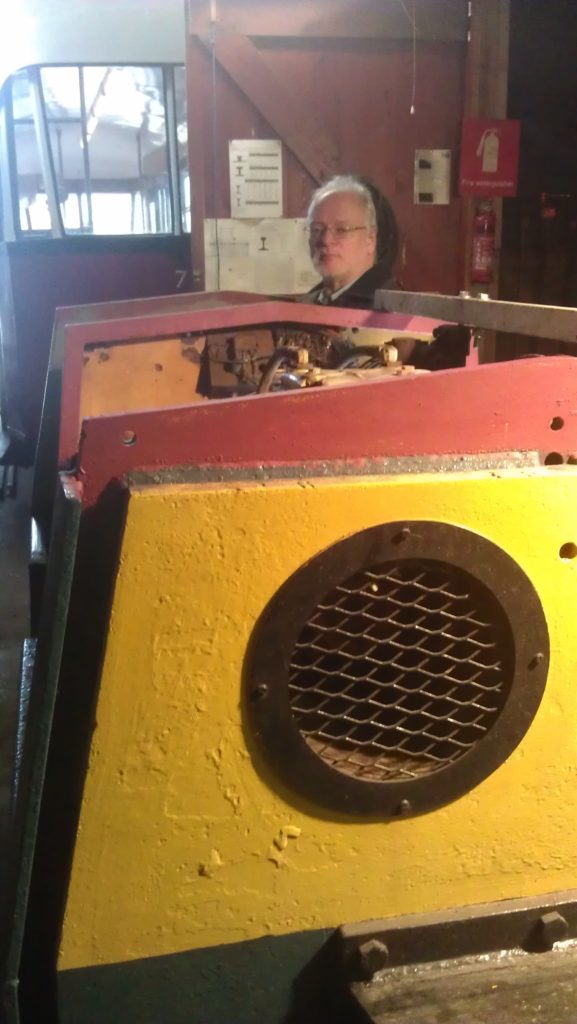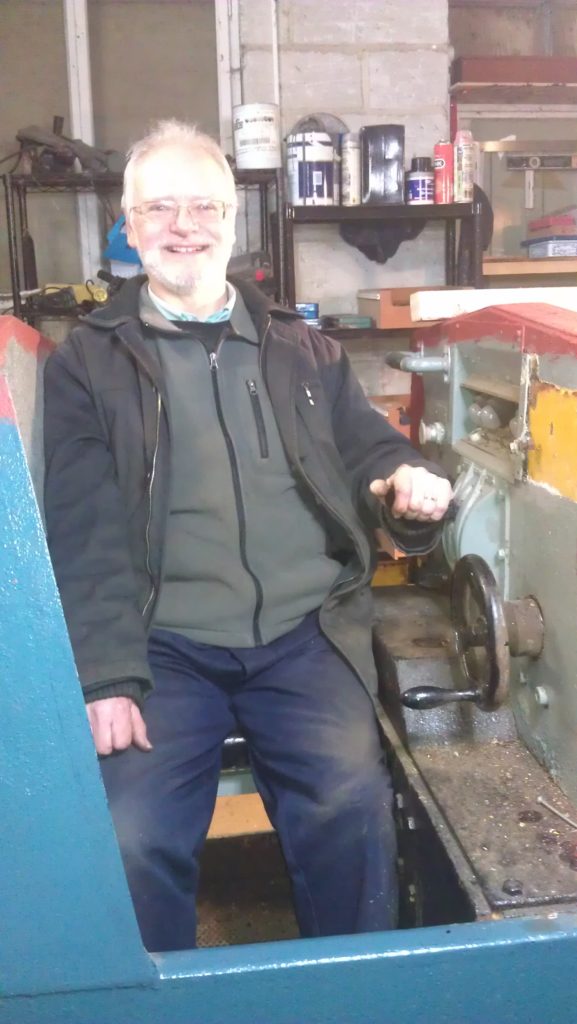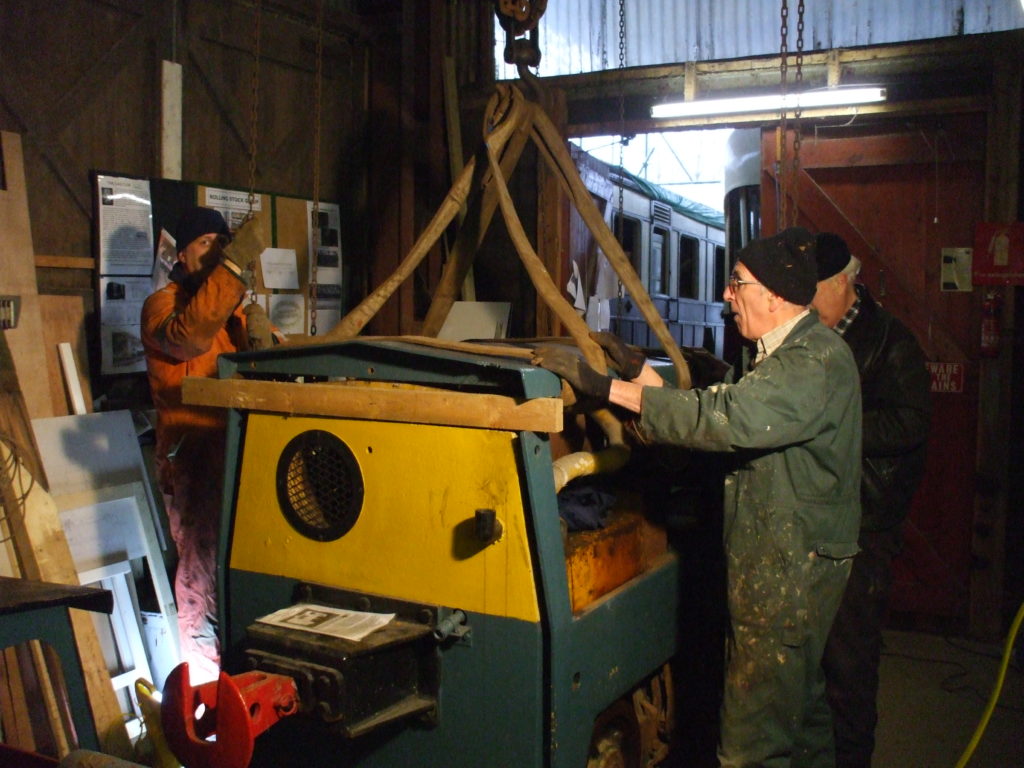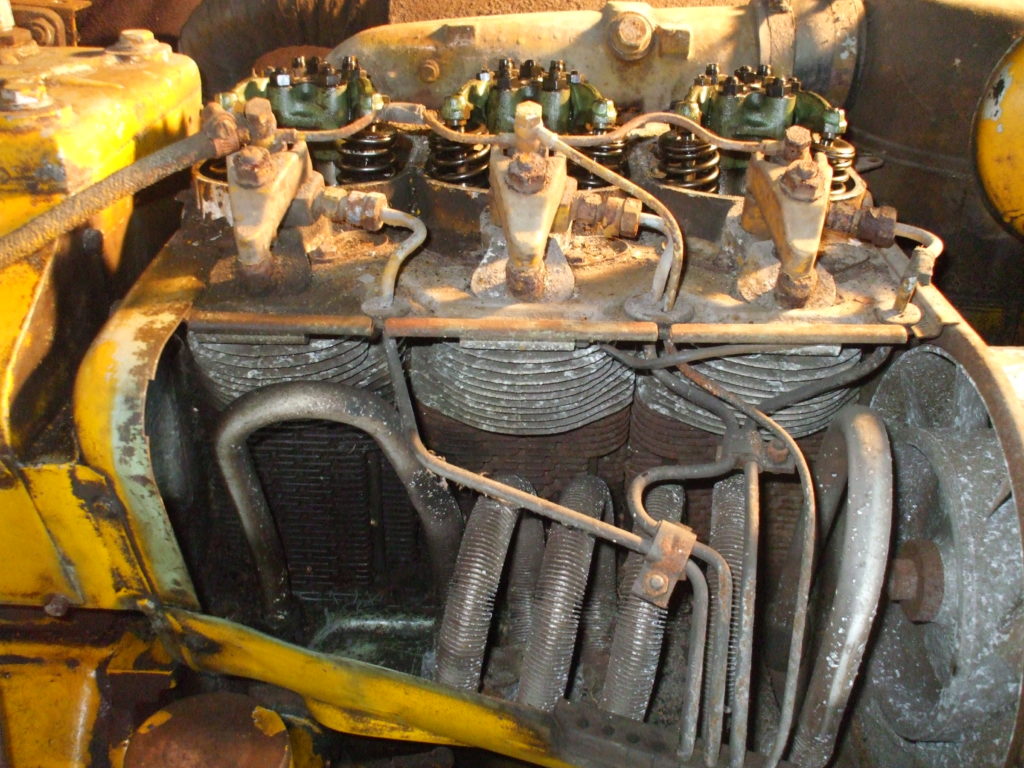
On 3rd and 7th January, the team braved the cold and damp, and got on with the Motor Rail loco. To improve access, the (extremely heavy) bonnet and the cab brackets were removed – the latter have been treated against rust, primed, and are stored. Some more accessible metal such as the main bulkhead tops, the sander bodies, and the cab floor (in which the old sleepers covered a large amount of assorted blown-in detritus – presumably from both Scotland and Devon) have been either cleaned up, de-rusted where necessary, or primed – and after an enormous effort on the part of Bob the remnants of the heavily-rusted battery tray are off. This was fixed on with UNF bolts tapped into blind holes within the thickness of the steel, so you can probably imagine the difficulty of access and leverage. Now we have to measure up the (many) pieces of rusted metal which used to form the battery tray and cover flanges, and fabricate a new one, to take the considerable weight of the multi-ampere-hour battery we’ll need.
The main driver’s seat was trial-fitted – it’s across the cab, as is usual with Motor Rails, but unusually all the controls are on the left hand. They are all pretty accessible, except for the sanders (now released by John and working, apart from some missing pipework), which operate from a very highly-sprung pull-button close to the driver’s seventh left hand rib – very awkward and very non-ergonomic.
Getting into (and out of) the cab is a bit of a circus act (must have been worse when the cab was on), so John B is refurbishing the grab-handles to a high quality – these will become very familiar to all drivers. Of course the cab was also trial-manned (by John R): despite the low seat position mandated by the mining origin, it’s not quite as difficult to see forward as we feared.
The rocker boxes, removed for a look-see, cover a very nice clean engine which has clean oil – but the air cleaner is completely impossible to remove/renovate without taking much of the rest of the engine off first. John did start removing the bolts which prevent the cab from folding up with the driver inside (you can perhaps imagine the probable result if this actually happened), but it seems that when the loco was re-configured for life above ground, the floor was welded to the body – so, as we have no need to fold (and there’s JUST enough room underneath to get to the underside of the floor and clean it up), we are leaving it as it is.
John R, our electrical specialist, is looking with interest at the various electrical fittings. Some additional wiring is – well – how to put this – quite domestic. Motor Rail do not seem to have gone in much for colour-coding, either. John is, however, confident, and seems to know what he has taken on – and has the advantage of having the electrical diagram, so we know what things SHOULD be like.
We are starting as we mean to go on, so all the removed parts are in one place, and all bolts, nuts, small parts, etc. are cleaned up, lightly oiled, and placed in labelled storage boxes. I’ve seen too many restoration projects where things have been mislaid or misidentified, to the detriment of the outcome.
Meanwhile, Toby got on with his storage area in Coach 7, and Bernie sorted the workshop (an endless task). Such is the range and depth of work we are now involved in that we have arranged a fourth work-day per month – meaning that in total we will end up with an average of two workdays each week (including Wenhaston): we hope that new volunteers will come forward to help, though you’ll have to be a Trust Member to work with us – easily arranged. The more volunteers we have the more we can do (which I guess is pretty obvious) – we need people with special skills as well as those with nothing but enthusiasm. As regular readers will know, a sense of humour is an asset. Contact mail@southwoldrailway.co.uk, and we will find something interesting for you to do.



